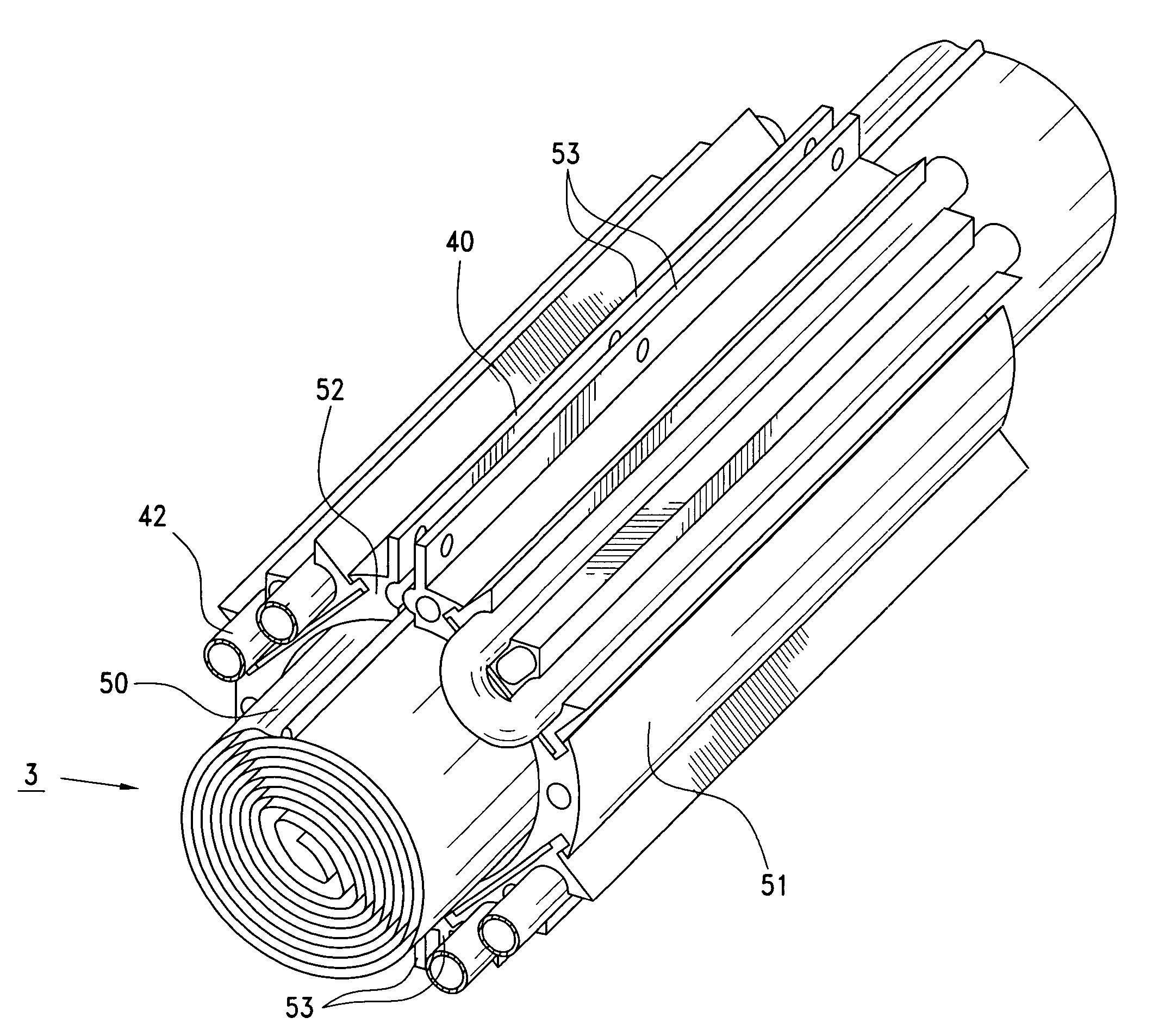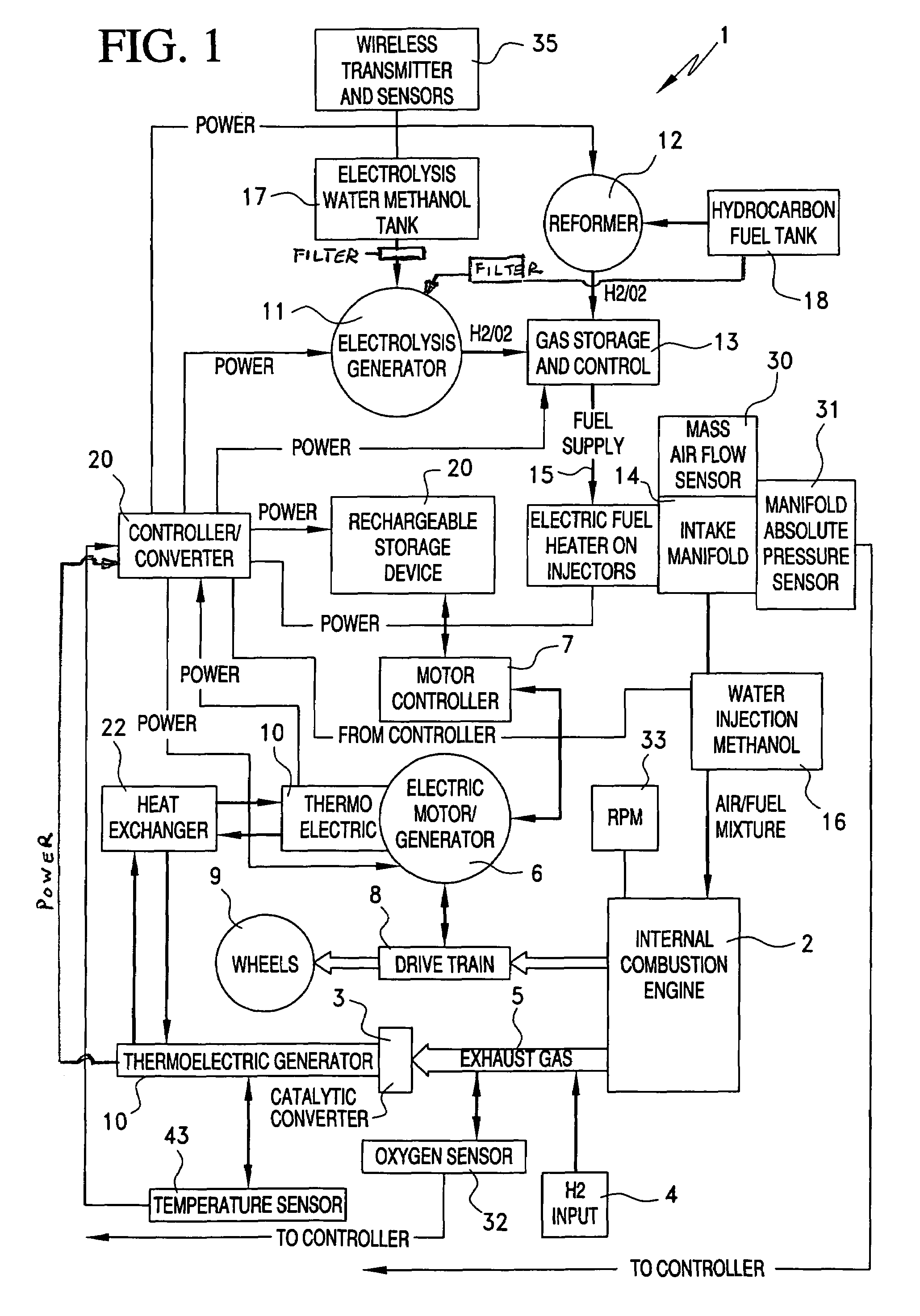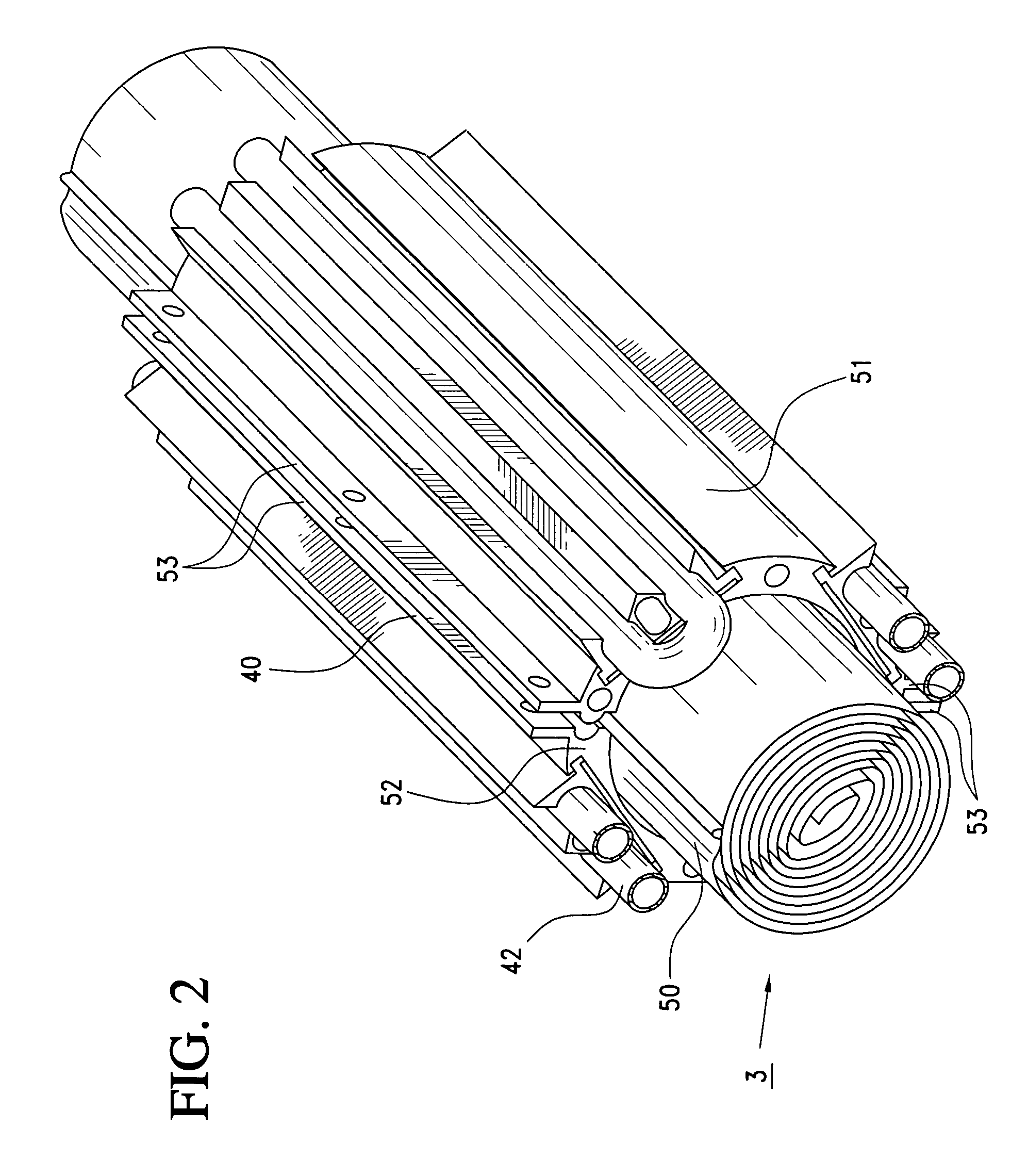System and method for reducing vehicle emissions and/or generating hydrogen
a technology of vehicle emissions and hydrogen, applied in the direction of engines, machines/engines, mechanical equipment, etc., can solve the problems of negating a significant portion of energy savings, reducing fuel economy, and electric load, and achieve the effect of reducing emissions from an internal combustion engine without increasing fuel consumption
- Summary
- Abstract
- Description
- Claims
- Application Information
AI Technical Summary
Benefits of technology
Problems solved by technology
Method used
Image
Examples
Embodiment Construction
[0034]FIG. 1 shows a thermoelectric-hydrogen hybrid power system 1 that illustrates the principles of a preferred embodiment of the invention. Power system 1 includes an internal combustion engine 2 that generates an exhaust stream, and a catalytic converter 3 for reducing the amount of hydrocarbon pollutants in the exhaust stream by interaction with a catalyst. While power system 1 is especially suitable for vehicles having a drive train 8 and wheels 9, the invention may also be applied to other types of vehicles in which the exhaust stream might be directed through a catalytic converter, such as trains and watercraft, and it is also within the scope of the invention to apply the principles of the invention to a stationary generator system, or any other system that utilizes an internal combustion engine.
[0035]According to the principles of the invention, in order to reduce cold-start emissions by pre-heating the catalytic converter 3, power system 1 includes means, in the form of a...
PUM
 Login to View More
Login to View More Abstract
Description
Claims
Application Information
 Login to View More
Login to View More - R&D
- Intellectual Property
- Life Sciences
- Materials
- Tech Scout
- Unparalleled Data Quality
- Higher Quality Content
- 60% Fewer Hallucinations
Browse by: Latest US Patents, China's latest patents, Technical Efficacy Thesaurus, Application Domain, Technology Topic, Popular Technical Reports.
© 2025 PatSnap. All rights reserved.Legal|Privacy policy|Modern Slavery Act Transparency Statement|Sitemap|About US| Contact US: help@patsnap.com



